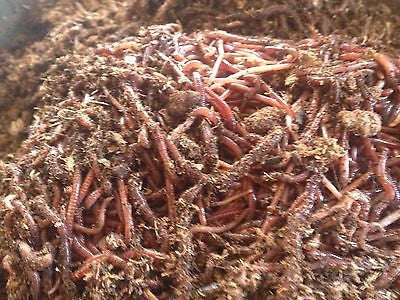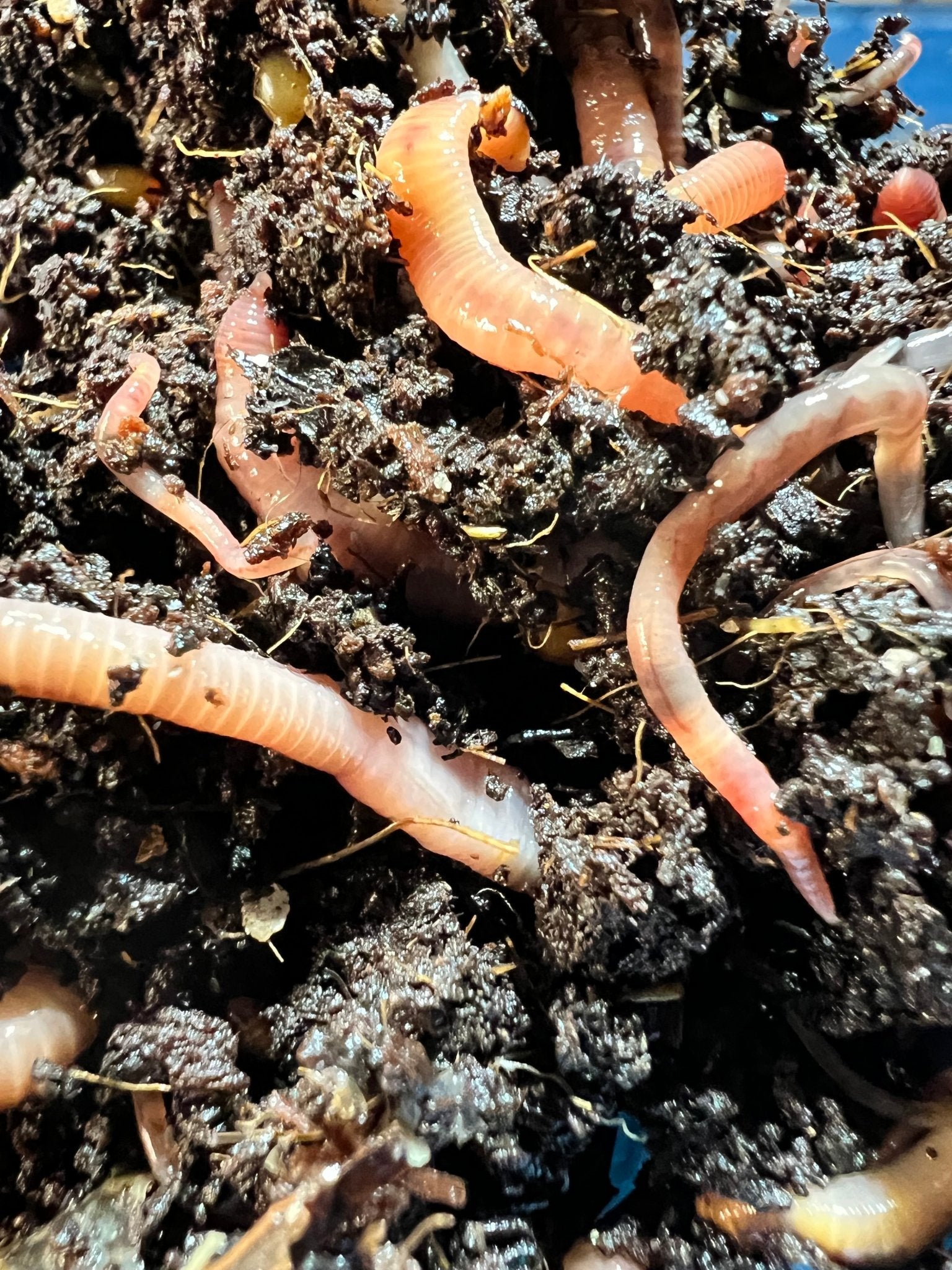Red Wiggler Worms - Natural Service for Environmentally Friendly Composting
Red Wiggler Worms - Natural Service for Environmentally Friendly Composting
Blog Article
Discover the Ultimate Overview to Red Wiggler Worms: Exactly How to Look after, Type, and Harvest These Beneficial Creatures
In the world of lasting horticulture and composting, red wiggler worms are considered vital allies due to their capability to break down raw material effectively and create nutrient-rich castings. Understanding the intricacies of caring for these little but magnificent creatures, mastering the art of breeding them, and finding out the ideal means to gather their spreadings can dramatically boost the wellness of your soil and plants. As we start this journey to discover the ultimate guide to red wiggler worms, we will reveal sensible tips, specialist understandings, and cutting-edge strategies that will not just benefit your yard yet likewise grow your admiration for these beneficial soil-dwellers.
Setting Up Your Red Wiggler Environment
When preparing to establish your red wiggler habitat, focus to information and proper planning are necessary. Producing an ideal environment for your red wigglers is critical for their well-being and recreation. Begin by picking a opaque and spacious container to house your worms, ensuring it has correct ventilation to maintain air movement. Pierce tiny holes in the cover and sides to prevent wetness buildup and permit oxygen circulation.
Next, line the bottom of the container with a layer of moistened bedding materials such as shredded paper, cardboard, or coconut coir. This bed linen offers a comfortable area for the worms to burrow and aids maintain dampness degrees within the environment. Introduce your red wigglers to their new home by delicately putting them in addition to the bedding.
Stay clear of hot or acidic foods, dairy, meat, and oils, as these can damage your worms. By following these actions, you can make sure a flourishing habitat for your red wiggler worms.
Crucial Treatment Tips for Red Wigglers
To ensure the wellness and durability of your red wiggler worms, it is imperative to implement vital care ideas that complement the meticulous setup of their environment. First of all, keep correct moisture levels in the worm bin by on a regular basis readjusting the bedding and examining. Red wigglers thrive in a damp atmosphere, so misting the bedding with water when it appears completely dry is vital. In addition, make certain adequate ventilation in the bin to avoid the build-up of unsafe gases like ammonia. Stirring the bedding periodically can assist aerate the atmosphere and promote healthy decay.

The Art of Red Wiggler Reproduction
How can red wiggler dog breeders maximize the recreation procedure to preserve a growing and healthy and balanced worm populace? To boost reproducing success, breeders need to make sure that the worm container environment stays wet, aerated, and rich in natural issue.
To motivate breeding and egg-laying, it is necessary to check the temperature level within the worm bin. Red wigglers like temperatures in between 55-77 ° F(13-25 ° C )for optimum reproduction problems. Red Wiggler Worms. In addition, staying clear of extreme temperature level fluctuations and supplying a dark and undisturbed atmosphere can promote Visit Website the worms' reproductive tasks

Harvesting and Using Worm Spreadings
Enhancing the reproduction process and preserving a healthy and balanced worm population via effective reproduction sets the phase for red wiggler breeders to leverage the valuable source of worm castings. Gathering worm spreadings, likewise referred to as vermicompost, is an important step in the red wiggler worm farming process. These nutrient-rich castings are a potent natural plant food that can enhance soil high quality, enhance plant growth, and boost crop returns.
To collect worm spreadings, you can utilize various approaches. One common strategy is to develop separate feeding zones in the worm container, tempting the worms to migrate to new bedding by concentrating food in one area. After the worms have moved, the spreadings can be gathered from the vacated area. An additional approach includes spreading the components of the bin in a thin layer under bright light; worms will certainly tunnel much deeper right into the stack, allowing for the very easy elimination of the castings from the top.
Utilizing these worm spreadings in your yard or farming ventures can substantially profit plant health and dirt fertility, making the effort of collecting them a satisfying facet of red wiggler worm farming.
Troubleshooting Common Red Wiggler Issues
When examining red wiggler worm ranches, dog breeders may run into usual issues that need troubleshooting to preserve the health and wellness and efficiency of their worm population. One common issue is overfeeding, which can result in a buildup of uneaten food and excess moisture in the worm bin. This can lead to foul odors, drawing in bugs, and potentially harming the worms. To treat this, decrease the feeding quantity and frequency till the worms overtake the readily available food.
Another concern dog breeders may encounter is the visibility of termites in their worm bins (Red Wiggler Worms). While some termites are safe, an overpopulation can suggest an inequality in the container's environment. To resolve this, readjust the wetness degrees by adding extra bedding materials like shredded newspaper or cardboard to create a drier habitat that is much less desirable for termites
Lastly, if worms are attempting to leave the bin, it might indicate unfavorable conditions my blog such as acidity or high temperature levels. Examine the pH levels of the bedding and make sure proper ventilation to control temperature level and dampness levels within the worm farm.
Final Thought
To conclude, red wiggler worms are important animals that can profit your yard or garden compost bin. By providing them with a suitable environment, appropriate treatment, and recognizing their breeding routines, you can maximize their possibility. Collecting their nutrient-rich spreadings can improve soil fertility and plant growth. Listen to typical problems that may emerge and address them quickly to make sure the health and wellness and productivity of your red wiggler populace.
Maintain the worm container in an appropriate place away from straight sunlight and extreme temperatures to offer a comfy living atmosphere for your red wigglers.
Enhancing the reproduction procedure and preserving a healthy and balanced worm population with successful reproduction sets the stage for red wiggler breeders to take advantage of the beneficial source of worm spreadings. Harvesting worm castings, likewise understood as vermicompost, is a crucial step in the red wiggler worm farming procedure. One common technique is to develop separate feeding zones in the worm container, tempting the worms to move to brand-new bedding by focusing food in one area.When assessing red wiggler worm farms, breeders may encounter common issues that require troubleshooting to keep the health and wellness and efficiency of their worm population.
Report this page